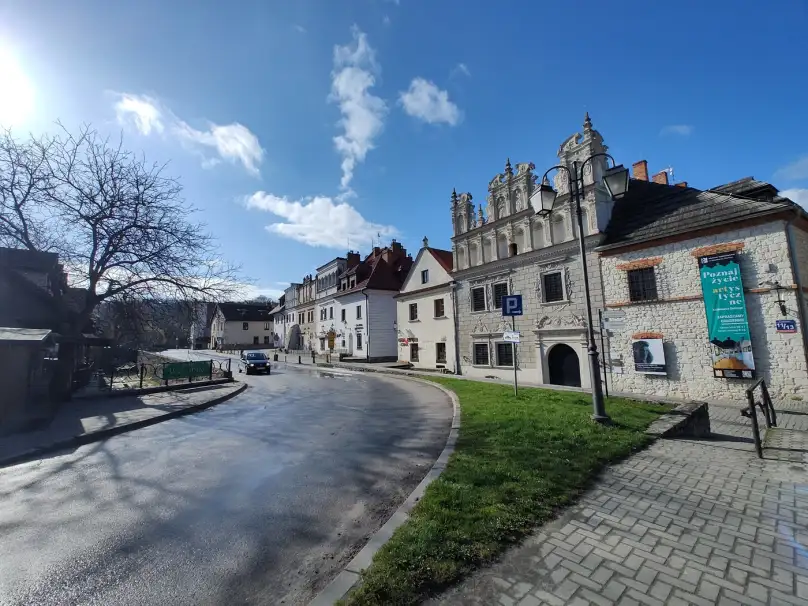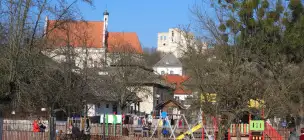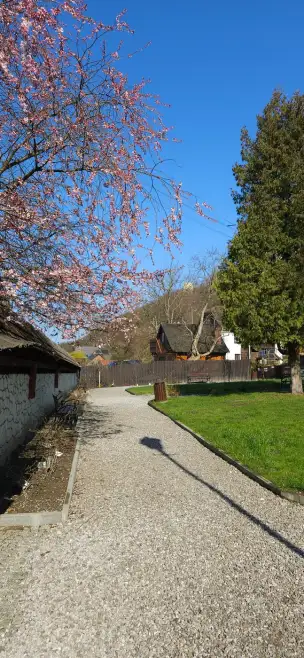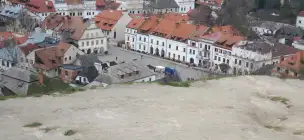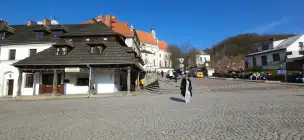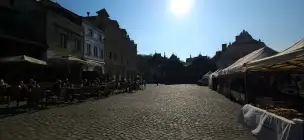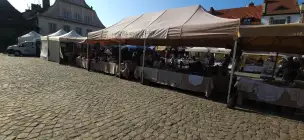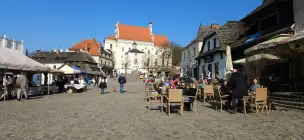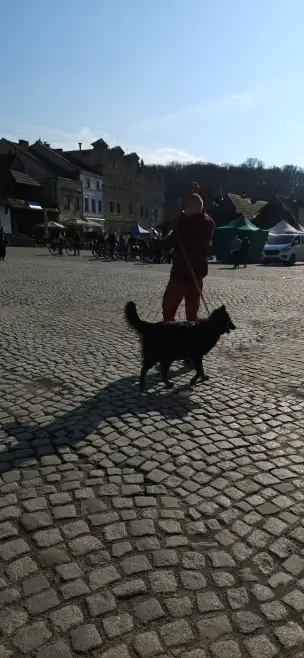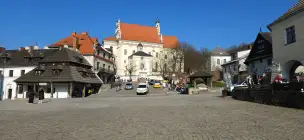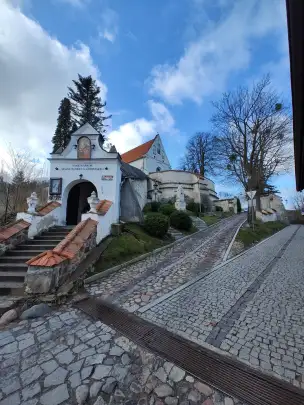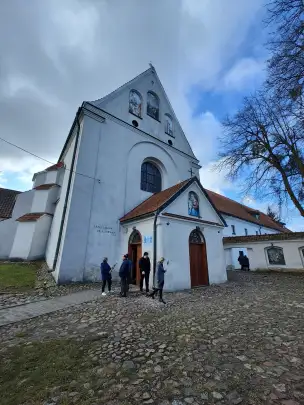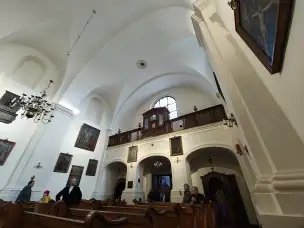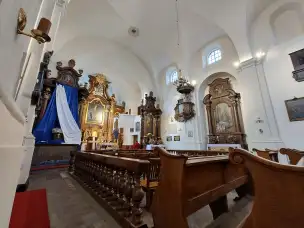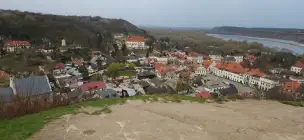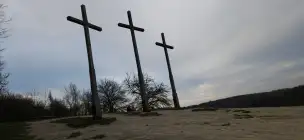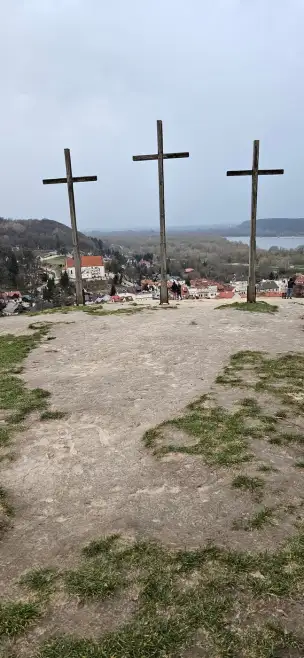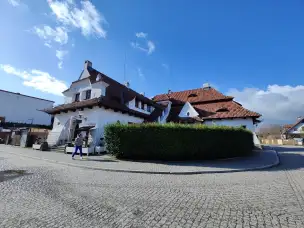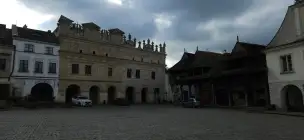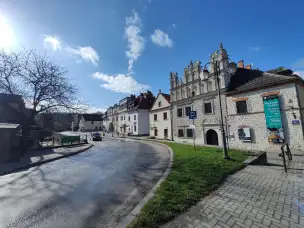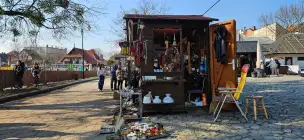A picturesque town in Poland, located on the banks of the Vistula River, about 50 kilometers southeast of Lublin.
Thanks to an outstanding revitalization effort carried out between 1947 and 1958, based on the original plan of the town conservator Karol Siciński, Kazimierz Dolny became a mecca for artists, elites, and snobs during the communist era.
It is here that you'll find the highest concentration of our native Hyacinths and Richards Bouquet*, which means that, alongside its undeniable charm, Kazimierz Dolny also has something slightly off-putting about it.
If, at the neighboring restaurant table, you notice a couple who, despite decades of marriage, have yet to develop shared abbreviations, code names, or gestures—and address each other as if attending a formal audience—don’t be surprised.
That’s just what Kazimierz Dolny is like: with a cool expression, an upturned nose, and sometimes a touch of affectation.
Discover the best flights to Poland See current prices and promotions.
Check flights to Poland
Kazimierz on the Vistula
The town was founded in the 14th century and has since played an important role as a center of trade and craftsmanship.
The heart of the town is the market square, surrounded by colorful townhouses that house cafés, restaurants, and art galleries. It’s also a venue for numerous festivals, fairs, and cultural events.
The area around Kazimierz Dolny features a charming landscape with many hiking trails that wind through picturesque hills, valleys, and forests. The Vistula River and numerous oxbow lakes invite outdoor activities such as kayaking or trekking.
Market Square in Kazimierz Dolny
Parish Church of St. John the Baptist and St. Bartholomew
The parish church of St. John the Baptist and St. Bartholomew in Kazimierz Dolny is the oldest church in the town, with roots going back to the 13th–14th centuries.
The church combines Gothic and Renaissance architectural styles, and its eight-century-long history, valuable interior, and historic instruments make it a must-see for anyone visiting Kazimierz. Located right next to the market square, with views of the Vistula River and the castle ruins, it forms the cultural and aesthetic heart of the town.
Sanctuary of the Annunciation of the Blessed Virgin Mary with Monastery
One of Kazimierz Dolny’s historic churches, this monastic complex now belongs to the Province of Our Lady of the Angels of the Order of Friars Minor. It was founded by two townsmen of Kazimierz: Bartłomiej and Mikołaj Przybyła.
The painting of the Annunciation of the Blessed Virgin Mary, located in the main altar, is an oil on wood panel created in the year 1600. Long venerated as a miraculous image, it was adorned with a papal crown on August 31, 1986.
Three Crosses Hill in Kazimierz Dolny
The most popular viewpoint in Kazimierz Dolny – the panorama includes the Old Town, Market Square, parish church, the Vistula River, and the castle ruins in Janowiec.
The first mention dates back to 1577, when it was referred to as “Góra Krzyżowa” (“Cross Hill”) – possibly a burial or cult site. In 1708, three wooden crosses were erected at the summit to commemorate the victims of the plague (cholera) during the Great Northern War.
Old Bathhouse (Stara Łaźnia)
The Old Bathhouse in Kazimierz Dolny is a beautiful example of early 20th-century urban architecture, now serving cultural and gastronomic purposes. It was built in 1921 on the site of a former slaughterhouse, designed by the renowned architect Jan Koszczyc-Witkiewicz, a representative of the Munich school.
The building is modeled on a traditional Polish noble manor house, blending styles such as Lublin Renaissance and Zakopane mannerism.
If you’re visiting in the summer, the cinema in the Old Bathhouse is a great alternative to the bustling Market Square – intimate, original, and full of character.
Przybyło Tenement Houses
The Przybyło Houses in Kazimierz Dolny are a unique pair of Renaissance townhouses, considered among the most beautiful and recognizable secular monuments in the town.
They were built by wealthy merchant brothers, Mikołaj and Krzysztof Przybyło – prominent figures in business and civic life (one of them also served as the town’s mayor) in the early 17th century.
Located in the southeastern part of the Market Square, at numbers 12–14, they can be admired freely from the outside throughout the day.
Celej House
A late Renaissance townhouse built from limestone before 1635. It is known for its impressive façade – a decorative attic filled with sculptures of St. Bartholomew, St. John the Baptist, Christ, the Virgin Mary, and fantastic creatures inspired by the works of Santi Gucci.
Little Market Square (Mały Rynek)
Created in the 16th–17th centuries as a Jewish artisan and trade district, it was full of butcher stalls, workshops, shops, and a brewery – the center of Jewish community life.
Today, Mały Rynek serves as a market space – especially popular during bazaars and antique fairs.



